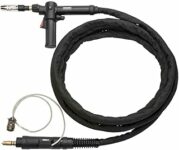If you are looking for a welding gun that can handle aluminum welding and other soft metals, you may want to consider a push pull welding guns. A push-pull gun is a type of MIG gun that has a special mechanism to feed the wire smoothly and consistently from the wire spool to the contact tip. Unlike a spool gun, which has a small spool of wire attached to the gun, a push-pull gun uses a separate wire feeder that can accommodate larger spools and longer torches.
A push-pull gun has many benefits for welding aluminum and other soft metals, such as:
- It reduces the risk of wire buckling, which can cause burnback, porosity, and spatter.
- It allows for faster and more precise wire feed speed, which can improve the quality and appearance of the weld.
- It provides better cooling system, which can extend the duty cycle and the lifespan of the gun and the consumables.
- It offers more flexibility and mobility, as the gun is lighter and the torch length can be adjusted according to the application.
In this article, we will cover the following topics:
- The different types of push-pull welding guns from various manufacturers, such as Miller, Lincoln Electric, and UNIMIG.
- The tips and tricks for using push-pull welding guns for optimal performance and smooth feeding.
By the end of this article, you will have a better understanding of what is a push-pull welding gun, how it differs from a spool gun or a standard MIG gun, and how to use it effectively for aluminum welding and other soft metals.
Types of Push Pull Welding Guns
There are many models and brands of push-pull welding guns available in the market, each with its own features and specifications. In this section, we will compare and contrast some of the most popular and widely used models from three major manufacturers: Miller, Lincoln Electric, and UNIMIG.
Miller Push Pull Welding Guns
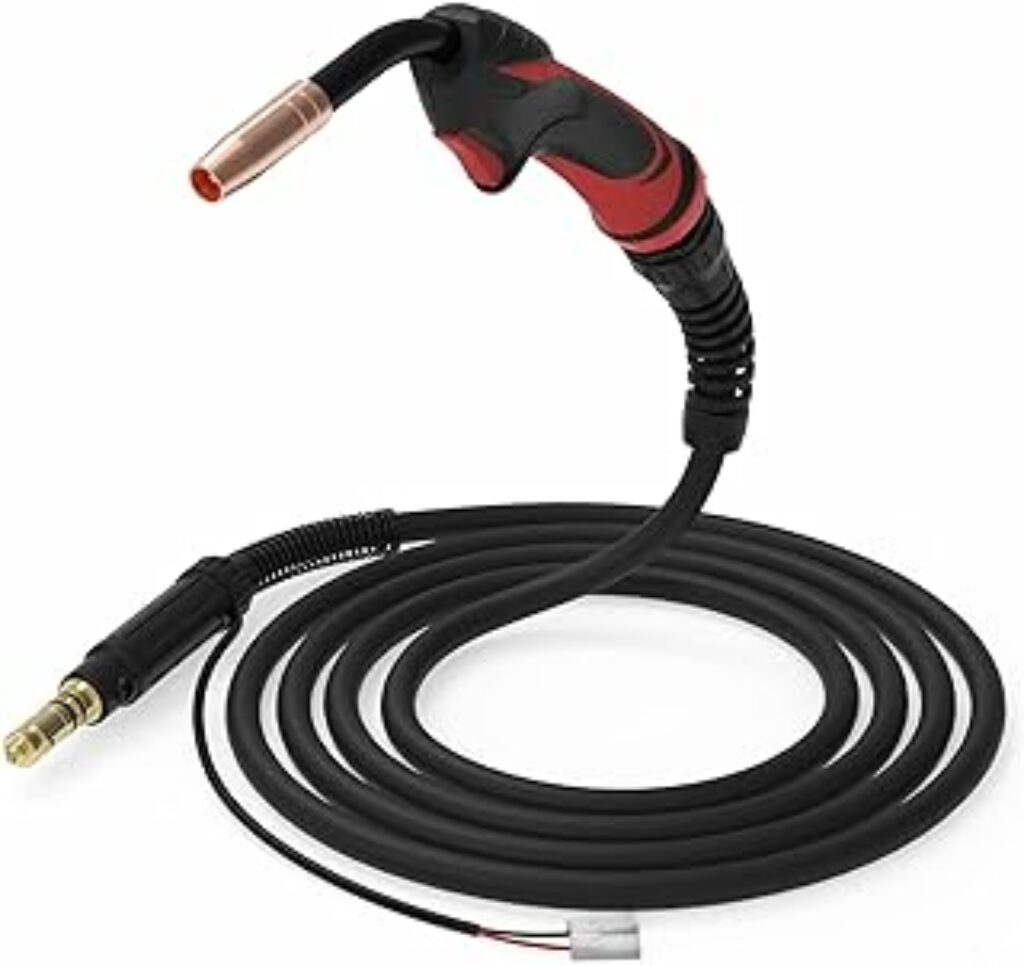
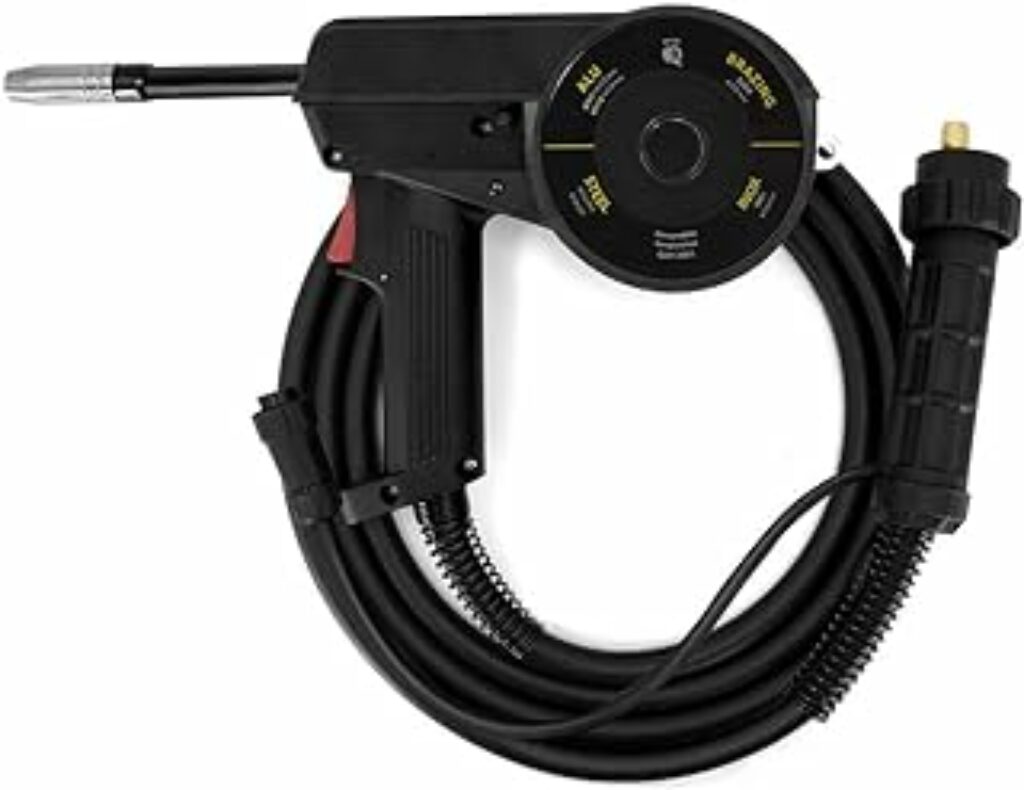
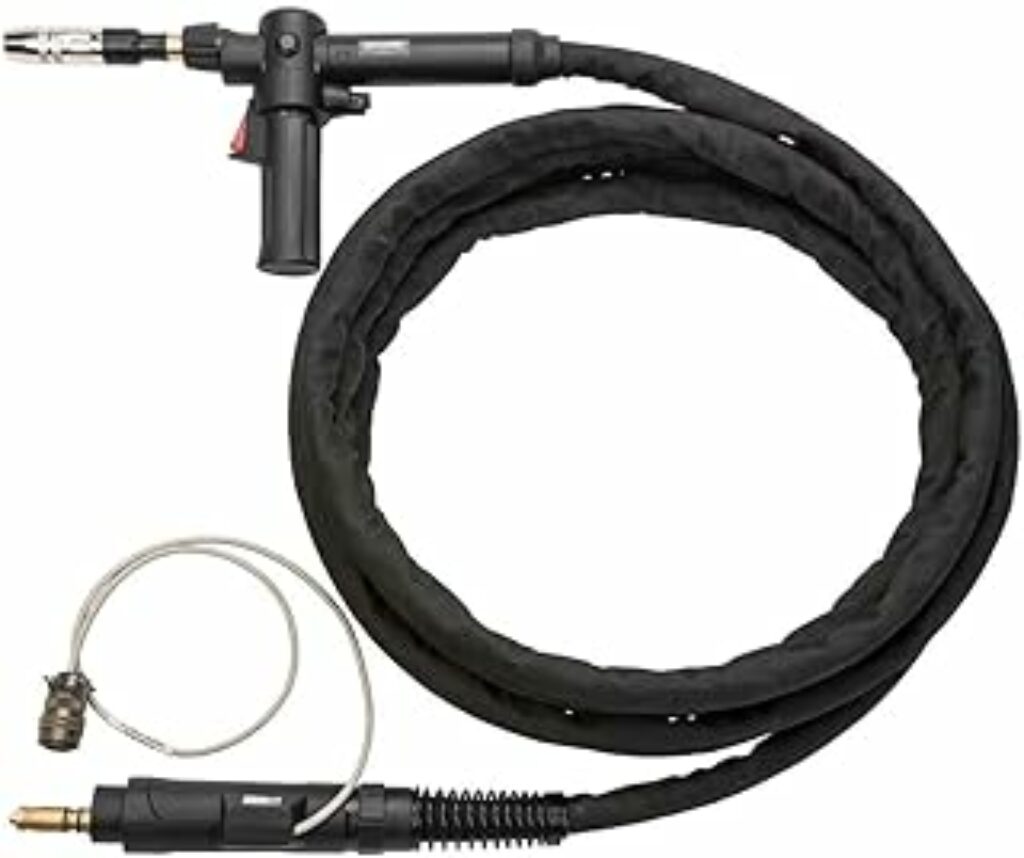
Miller is one of the leading manufacturers of welding equipment and accessories, and they offer a range of push-pull guns for different applications and budgets. Some of their models include:
- XR-Aluma-Pro™ Plus: This is a premium push-pull gun that is designed for high-performance aluminum welding. It has a 300-amp rating, a 60% duty cycle, and a wire feed speed range of 70-875 IPM. It also features a rotating head, a dual-schedule switch, a trigger hold, and a replaceable feed cable liner. It can handle wire diameters from 0.030 to 1/16 inch, and torch lengths from 15 to 25 feet.
- XR™-Pistol Plus: This is a versatile push-pull gun that can be used for both aluminum and steel welding. It has a 200-amp rating, a 60% duty cycle, and a wire feed speed range of 70-875 IPM. It also features a rotating head, a dual-schedule switch, a trigger hold, and a replaceable feed cable liner. It can handle wire diameters from 0.030 to 1/16 inch, and torch lengths from 10 to 25 feet.
- XR™-Edge: This is a compact and lightweight push-pull gun that is ideal for tight spaces and hard-to-reach areas. It has a 150-amp rating, a 60% duty cycle, and a wire feed speed range of 70-875 IPM. It also features a rotating head, a dual-schedule switch, a trigger hold, and a replaceable feed cable liner. It can handle wire diameters from 0.030 to 3/64 inch, and torch lengths from 10 to 15 feet.
| Model | Rating | Duty Cycle | Wire Feed Speed | Wire Diameter | Torch Length |
|---|---|---|---|---|---|
| XR-Aluma-Pro™ Plus | 300 amps | 60% | 70-875 IPM | 0.030-1/16 inch | 15-25 feet |
| XR™-Pistol Plus | 200 amps | 60% | 70-875 IPM | 0.030-1/16 inch | 10-25 feet |
| XR™-Edge | 150 amps | 60% | 70-875 IPM | 0.030-3/64 inch | 10-15 feet |
Lincoln Electric Push-Pull Welding Guns
Lincoln Electric is another reputable manufacturer of welding equipment and accessories, and they also offer a variety of push-pull guns for different needs and preferences. Some of their models include:
- Python® Plus: This is a high-performance push-pull gun that is designed for aluminum welding. It has a 300-amp rating, a 60% duty cycle, and a wire feed speed range of 50-900 IPM. It also features a rotating head, a dual-schedule switch, a trigger hold, and a replaceable feed cable liner. It can handle wire diameters from 0.030 to 1/16 inch, and torch lengths from 15 to 25 feet.
- Magnum® PRO AL: This is a versatile push-pull gun that can be used for both aluminum and steel welding. It has a 250-amp rating, a 60% duty cycle, and a wire feed speed range of 50-900 IPM. It also features a rotating head, a dual-schedule switch, a trigger hold, and a replaceable feed cable liner. It can handle wire diameters from 0.030 to 1/16 inch, and torch lengths from 10 to 25 feet.
- Magnum® SG: This is a compact and lightweight push-pull gun that is ideal for small and medium projects. It has a 100-amp rating, a 40% duty cycle, and a wire feed speed range of 50-600 IPM. It also features a rotating head, a dual-schedule switch, a trigger hold, and a replaceable feed cable liner. It can handle wire diameters from 0.030 to 3/64 inch, and torch lengths from 10 to 15 feet.
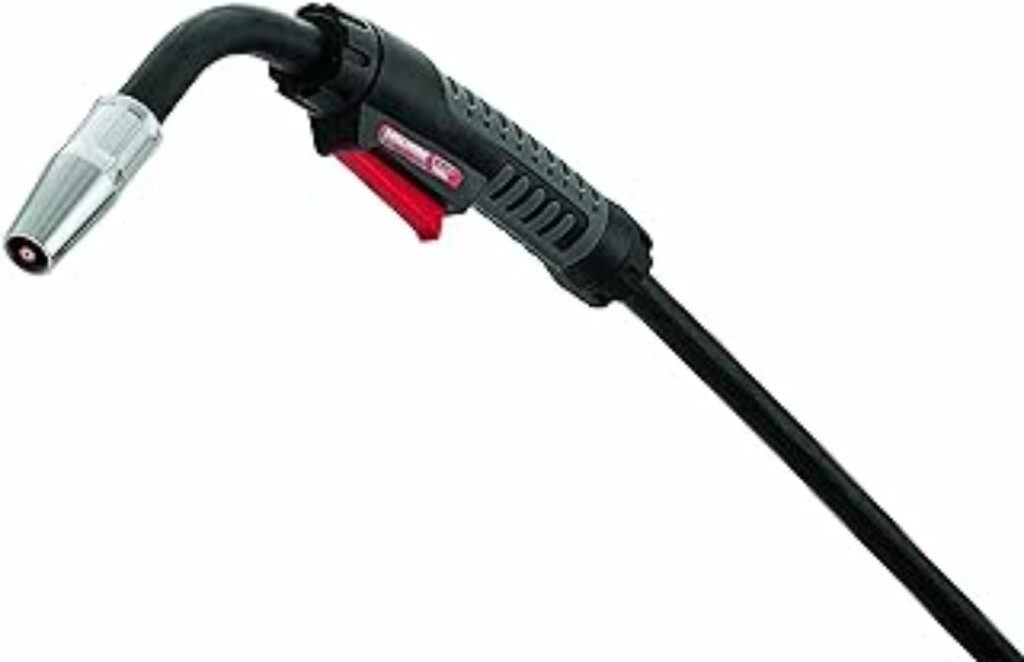
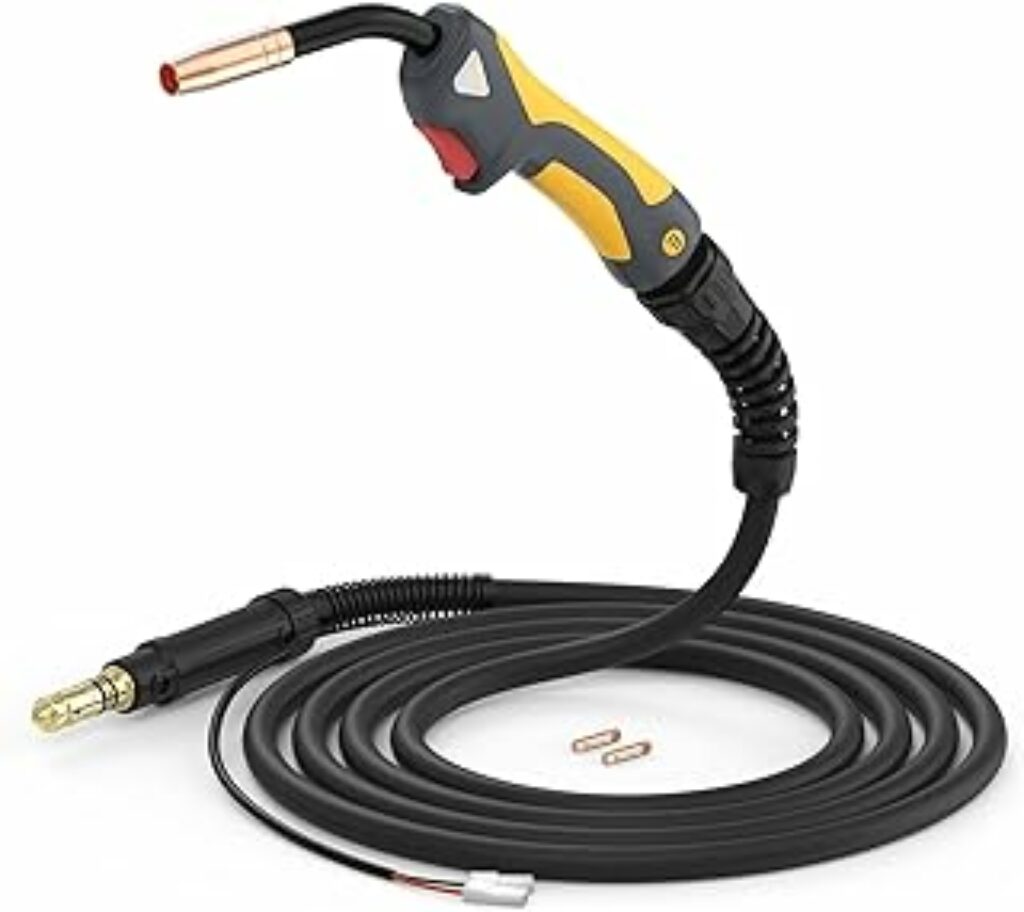
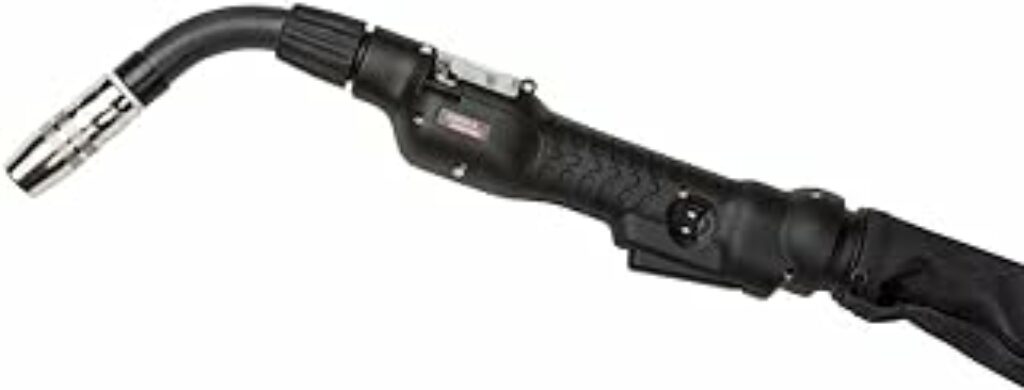
| Model | Rating | Duty Cycle | Wire Feed Speed | Wire Diameter | Torch Length |
|---|---|---|---|---|---|
| Python® Plus | 300 amps | 60% | 50-900 IPM | 0.030-1/16 inch | 15-25 feet |
| Magnum® PRO AL | 250 amps | 60% | 50-900 IPM | 0.030-1/16 inch | 10-25 feet |
| Magnum® SG | 100 amps | 40% | 50-600 IPM | 0.030-3/64 inch | 10-15 feet |
UNIMIG Push Pull Welding Guns
UNIMIG is an Australian manufacturer of welding equipment and accessories, and they also offer a range of push-pull guns for different applications and budgets. Some of their models include:
- SB36 MIG Torch: This is a premium push-pull gun that is designed for high-performance aluminum welding. It has a 400-amp rating, a 60% duty cycle, and a wire feed speed range of 2-18 m/min. It also features a rotating head, a dual-schedule switch, a trigger hold, and a replaceable feed cable liner. It can handle wire diameters from 0.8 to 1.6 mm, and torch lengths from 4 to 8 meters.
- SB24 MIG Torch: This is a versatile push-pull gun that can be used for both aluminum and steel welding. It has a 250-amp rating, a 60% duty cycle, and a wire feed speed range of 2-18 m/min. It also features a rotating head, a dual-schedule switch, a trigger hold, and a replaceable feed cable liner. It can handle wire diameters from 0.8 to 1.2 mm, and torch lengths from 4 to 8 meters.
- SB15 MIG Torch: This is a compact and lightweight push-pull gun that is ideal for small and medium projects. It has a 180-amp rating, a 35% duty cycle, and a wire feed speed range of 2-12 m/min. It also features a rotating head, a dual-schedule switch, a trigger hold, and a replaceable feed cable liner. It can handle wire diameters from 0.6 to 0.9 mm, and torch lengths from 3 to 4 meters.
| Model | Rating | Duty Cycle | Wire Feed Speed | Wire Diameter | Torch Length |
|---|---|---|---|---|---|
| SB36 MIG Torch | 400 amps | 60% | 2-18 m/min | 0.8-1.6 mm | 4-8 meters |
| SB24 MIG Torch | 250 amps | 60% | 2-18 m/min | 0.8-1.2 mm | 4-8 meters |
| SB15 MIG Torch | 180 amps | 35% | 2-12 m/min | 0.6-0.9 mm | 3-4 meters |
As you can see, there are many options and factors to consider when choosing a push-pull welding gun for your project. You should select the model that best suits your needs, preferences, and budget. You should also check the compatibility and availability of the gun and the consumables with your wire feeder and power source.
| There are many models and brands of push-pull welding guns available in the market, each with its own features and specifications. |
| Some of the most popular and widely used models are from Miller, Lincoln Electric, and UNIMIG. |
| You should compare and contrast the advantages and disadvantages of each model, such as rating, duty cycle, wire feed speed, wire diameter, and torch length. |
| You should also check the compatibility and availability of the gun and the consumables with your wire feeder and power source. |
Sure, I will write a detailed section for your article about the tips and tricks for using push-pull welding guns based on your instructions. Here is what I came up with:
Tips and Tricks for Using Push Pull Welding Guns
Using a push-pull welding gun can make your aluminum welding and other soft metal welding projects easier and more efficient. However, to get the best results, you need to know how to set up and adjust the gun and the wire feeder properly, and how to avoid or solve some common issues that may arise. In this section, we will share some tips and tricks for using push-pull welding guns for optimal performance and smooth feeding.

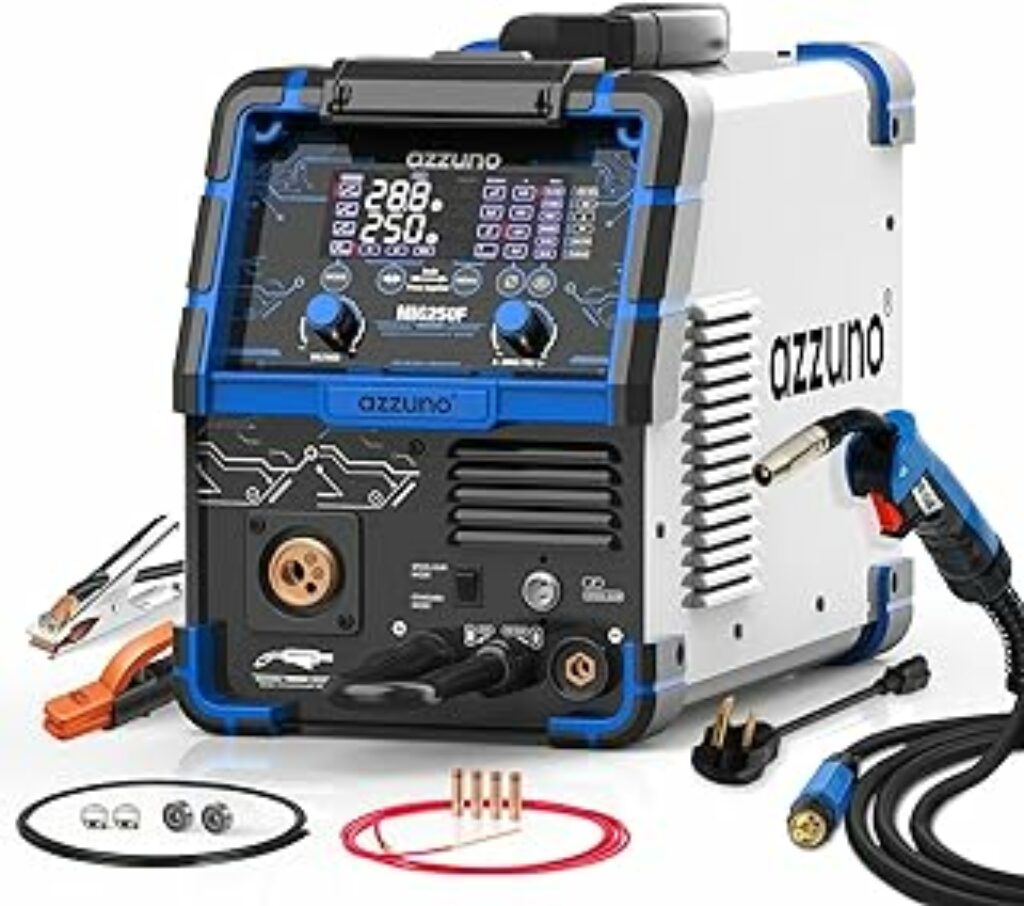

Setting Up and Adjusting the Push-Pull Welding Gun
Before you start welding, you need to make sure that the push-pull gun and the wire feeder are compatible and connected correctly. You also need to select the right wire size, drive rolls, contact tips, and liner for the type of metal and the thickness of the material you are welding. Here are some steps to follow:
- Check the manufacturer’s manual and specifications for the push-pull gun and the wire feeder, and make sure they are compatible and have the same polarity and voltage settings.
- Connect the push-pull gun to the wire feeder, and make sure the connection is secure and tight. You may need to use an adapter or a connector depending on the model and brand of the gun and the feeder.
- Load the wire spool into the wire feeder, and make sure it is aligned and tensioned properly. You may need to adjust the spool brake or the spool hub tension to prevent the wire from uncoiling or tangling.
- Feed the wire through the feed cable and the gun, and make sure it is straight and smooth. You may need to use a wire straightener or a wire guide to prevent the wire from kinking or curling.
- Select the right wire size for the type and thickness of the metal you are welding. For aluminum welding, the recommended wire sizes are 0.030, 0.035, or 0.047 inch, depending on the thickness of the material and the amperage of the gun.
- Select the right drive rolls for the wire size and type you are using. For aluminum welding, the recommended drive rolls are U-groove or V-knurled, depending on the wire size and the wire feeder model. The drive rolls should be matched to the wire size and have enough pressure to feed the wire smoothly and consistently, but not too much to deform or damage the wire.
TOOLIOM MIG Welding Gun Torch Stinger
YESWELDER MIG Welding Gun Torch Stinger
YESWELDER 15ft 250 Amp Mig Welding Gun Torch
HZXVOGEN 200A Spool Gun for Aluminum MIG Welding
Lincoln Electric Magnum PRO 100L Welding Gun
- Select the right contact tips for the wire size and type you are using. For aluminum welding, the recommended contact tips are tapered or recessed, depending on the wire size and the gun model. The contact tips should be slightly larger than the wire size to allow for thermal expansion and prevent the wire from sticking or jamming. The contact tips should also be clean and free of spatter or debris.
- Select the right liner for the wire size and type you are using. For aluminum welding, the recommended liner is Teflon or nylon, depending on the wire size and the gun model. The liner should be matched to the wire size and have enough length to reach the contact tip, but not too long to cause friction or drag. The liner should also be clean and free of dirt or dust.
| Wire Size | Drive Rolls | Contact Tips | Liner |
|---|---|---|---|
| 0.030 inch | U-groove or V-knurled | Tapered or recessed | Teflon or nylon |
| 0.035 inch | U-groove or V-knurled | Tapered or recessed | Teflon or nylon |
| 0.047 inch | U-groove or V-knurled | Tapered or recessed | Teflon or nylon |
Avoiding and Solving Common Issues with Push-Pull Welding Guns
Even if you set up and adjust the push-pull gun and the wire feeder correctly, you may still encounter some challenges and problems when welding aluminum and other soft metals. Some of the most common issues are:
- Wire buckling: This is when the wire bends or folds inside the feed cable or the gun, causing the wire to stop feeding or to feed erratically. This can result in burnback, porosity, and spatter. To prevent or fix wire buckling, you should:
- Use the right wire size, drive rolls, contact tips, and liner for the type of metal and the thickness of the material you are welding.
- Adjust the wire feed speed and the drive roll pressure according to the manufacturer’s recommendations and the welding conditions.
- Keep the feed cable and the gun as straight and as short as possible, and avoid sharp bends or twists.
- Clean and lubricate the feed cable and the liner regularly, and replace them if they are worn or damaged.
- Burnback: This is when the wire melts and fuses to the contact tip, causing the arc to extinguish and the wire to stop feeding. This can result in porosity, spatter, and damage to the contact tip and the gun. To prevent or fix burnback, you should:
- Use the right wire size, drive rolls, contact tips, and liner for the type of metal and the thickness of the material you are welding.
- Adjust the wire feed speed and the voltage according to the manufacturer’s recommendations and the welding conditions.
- Keep the contact tip clean and free of spatter or debris, and replace it if it is worn or damaged.
- Keep the contact tip slightly larger than the wire size to allow for thermal expansion and prevent the wire from sticking or jamming.
- Keep the contact tip at the right distance from the workpiece, and avoid touching the workpiece with the contact tip or the gun.
- Porosity: This is when the weld has holes or cavities caused by trapped gas or contaminants. This can result in weak and ugly welds. To prevent or fix porosity, you should:
- Use the right wire size, drive rolls, contact tips, and liner for the type of metal and the thickness of the material you are welding.
- Use a high-quality wire that is clean and free of dirt, dust, or oxidation.
- Use a shielding gas that is suitable for the type of metal and the welding process you are using. For aluminum welding, the recommended shielding gas is 100% argon or a mixture of argon and helium.
- Adjust the gas flow rate and the gas nozzle according to the manufacturer’s recommendations and the welding conditions.
- Keep the gas nozzle clean and free of spatter or debris, and replace it if it is worn or damaged.
- Keep the gas nozzle at the right distance from the workpiece, and avoid excessive or insufficient gas coverage.
- Clean and degrease the workpiece and the wire before welding, and remove any paint, rust, or oxide.
- Spatter: This is when the molten metal splashes or sticks to the workpiece, the wire, or the gun, causing a rough and messy weld appearance. This can result in wasted material and damage to the contact tip and the gun. To prevent or fix spatter, you should:
- Use the right wire size, drive rolls, contact tips, and liner for the type of metal and the thickness of the material you are welding.
- Adjust the wire feed speed and the voltage according to the manufacturer’s recommendations and the welding conditions.
- Use a shielding gas that is suitable for the type of metal and the welding process you are using. For aluminum welding, the recommended shielding gas is 100% argon or a mixture of argon and helium.
- Adjust the gas flow rate and the gas nozzle according to the manufacturer’s recommendations and the welding conditions.
- Keep the contact tip clean and free of spatter or debris, and replace it if it is worn or damaged.
- Keep the contact tip at the right distance from the workpiece, and avoid touching the workpiece with the contact tip or the gun.
- Use an anti-spatter spray or gel on the workpiece, the wire, or the gun to prevent the spatter from sticking.
| Issue | Cause | Solution |
|---|---|---|
| Wire buckling | Wrong wire size, drive rolls, contact tips, or liner. Improper wire feed speed or drive roll pressure. Bent or twisted feed cable or gun. Dirty or damaged feed cable or liner. | Use the right wire size, drive rolls, contact tips, and liner. Adjust the wire feed speed and the drive roll pressure. Keep the feed cable and the gun straight and short. Clean and lubricate the feed cable and the liner. |
| Burnback | Wrong wire size, drive rolls, contact tips, or liner. Improper wire feed speed or voltage. Dirty or damaged contact tip. Too small contact tip. Too close contact tip to workpiece. | Use the right wire size, drive rolls, contact tips, and liner. Adjust the wire feed speed and the voltage. Keep the contact tip clean and free of spatter or debris. Keep the contact tip slightly larger than the wire size. Keep the contact tip at the right distance from the workpiece. |
| Porosity | Wrong wire size, drive rolls, contact tips, or liner. Dirty or oxidized wire. Wrong or insufficient shielding gas. Improper gas flow rate or gas nozzle. Dirty or damaged gas nozzle. Too far or too close gas nozzle to workpiece. Dirty or contaminated workpiece or wire. | Use the right wire size, drive rolls, contact tips, and liner. Use a high-quality wire that is clean |
In this article, we have learned about push-pull welding guns and how they can help you with your aluminum welding and other soft metal welding projects. We have covered the following topics:
- The features and specifications of different models of push-pull guns from various manufacturers, such as Miller, Lincoln Electric, and UNIMIG.
- The tips and tricks for setting up and adjusting the push-pull gun and the wire feeder for optimal performance and smooth feeding.
- The common challenges and problems that may arise when using a push-pull gun, such as wire buckling, burnback, porosity, and spatter, and how to prevent or fix them.
- The FAQs about push-pull welding guns, based on the “People Also Ask” section from Google.
We have also provided some key takeaways, tables, and external links for further learning and improvement.
We hope that this article has given you a better understanding of what is a push-pull welding gun, how it differs from a spool gun or a standard MIG gun, and how to use it effectively for aluminum welding and other soft metals.
A push-pull welding gun is a great tool for welding aluminum and other soft metals, as it can reduce the risk of wire buckling, improve the wire feed speed and the weld quality, provide better cooling system, and offer more flexibility and mobility. However, to get the best results, you need to choose the right model and brand of the gun and the wire feeder, and set up and adjust them properly. You also need to be aware of the common issues that may occur when using a push-pull gun, and how to avoid or solve them.
If you are interested in learning more about push-pull welding guns and aluminum welding, you can check out the following external links:
- [How to Set Up a Push-Pull Gun for Aluminum Welding]
- [Aluminum Workshop: The push-pull gun and its perks for GMAW]
- [Spool Gun vs Push-Pull Gun | UNIMIG Welding Guides & Tutorials]
Thank you for reading this article, and happy welding! 😊
| A push-pull welding gun is a type of MIG gun that has a special mechanism to feed the wire smoothly and consistently from the wire spool to the contact tip. |
| A push-pull welding gun has many benefits for welding aluminum and other soft metals, such as reducing the risk of wire buckling, allowing for faster and more precise wire feed speed, providing better cooling system, and offering more flexibility and mobility. |
| A push-pull welding gun differs from a spool gun in terms of design, performance, and convenience. A spool gun has a simpler and cheaper design, but it has a lower duty cycle, a limited wire feed speed range, a shorter torch length, and a heavier and bulkier gun. A push-pull gun has a more advanced and expensive design, but it has a higher duty cycle, a wider wire feed speed range, a longer torch length, and a lighter and slimmer gun. |
| The choice between a spool gun and a push-pull gun depends on several factors, such as the type and thickness of the metal, the size and frequency of the project, and the availability and compatibility of the equipment. |
| Push-pull MIG welding guns are not necessary for every welding project, but they can be very useful and beneficial for some applications and situations. Push-pull MIG welding guns are especially recommended for welding aluminum and other soft metals, welding large and complex projects, and welding in tight spaces and hard-to-reach areas. |
-
HZXVOGEN 200A Spool Gun for Aluminum MIG Welding
—
$165.99
$289.99 -
Lincoln Electric Magnum PRO Curve AL Air-Cooled Pistol Grip
—
$3,499.00
$5,896.89
FAQs about Push-Pull Welding Guns
In this section, we will answer some of the most frequently asked questions about push-pull welding guns, based on the “People Also Ask” section from Google. These questions are:
- What are the perks of using a push-pull gun for GMAW?
- What is the difference between a spool gun and a push-pull gun?
- Do you push or pull when MIG welding?
- Which one should I use: spool gun or push-pull gun?
- Are push-pull MIG welding guns necessary?
We will provide clear and concise answers to these questions, along with some relevant information and tips.
What are the perks of using a push-pull gun for GMAW?
A push-pull gun is a type of MIG gun that has a special mechanism to feed the wire smoothly and consistently from the wire spool to the contact tip. Using a push-pull gun for GMAW (Gas Metal Arc Welding) has many perks, such as:
- It reduces the risk of wire buckling, which can cause burnback, porosity, and spatter.
- It allows for faster and more precise wire feed speed, which can improve the quality and appearance of the weld.
- It provides better cooling system, which can extend the duty cycle and the lifespan of the gun and the consumables.
- It offers more flexibility and mobility, as the gun is lighter and the torch length can be adjusted according to the application.
What is the difference between a spool gun and a push-pull gun?
A spool gun is another type of MIG gun that is designed for welding aluminum and other soft metals. It has a small spool of wire attached to the gun, which eliminates the need for a separate wire feeder. The difference between a spool gun and a push-pull gun is that:
- A spool gun has a simpler and cheaper design, but it has a lower duty cycle and a limited wire feed speed range.
- A spool gun can only handle small spools of wire, which means more frequent spool changes and higher wire costs.
- A spool gun has a shorter torch length, which means less reach and maneuverability.
- A spool gun is heavier and bulkier, which means more fatigue and strain for the welder.
Do you push or pull when MIG welding?
When MIG welding, you can either push or pull the gun along the direction of the weld. The choice depends on the type of metal, the thickness of the material, the position of the weld, and the personal preference of the welder. However, some general guidelines are:
- Pushing the gun is when the gun is tilted away from the direction of the weld, and the weld pool is behind the arc. Pushing the gun is recommended for welding thin metals, as it produces less heat and penetration, and a flatter and wider weld bead.
- Pulling the gun is when the gun is tilted towards the direction of the weld, and the weld pool is in front of the arc. Pulling the gun is recommended for welding thick metals, as it produces more heat and penetration, and a narrower and deeper weld bead.
Which one should I use: spool gun or push-pull gun?
The choice between a spool gun and a push-pull gun depends on several factors, such as:
- The type and thickness of the metal you are welding. For aluminum and other soft metals, a push-pull gun is usually preferred, as it can handle larger wire sizes and provide better wire feeding and welding performance. For steel and other hard metals, a spool gun may be sufficient, as it can handle smaller wire sizes and provide adequate wire feeding and welding performance.
- The size and frequency of the project. For small and occasional projects, a spool gun may be more economical and convenient, as it has a lower initial cost and requires less maintenance and setup. For large and frequent projects, a push-pull gun may be more efficient and reliable, as it has a higher duty cycle and can accommodate larger spools of wire and longer torches.
- The availability and compatibility of the equipment. For some wire feeders and power sources, a spool gun may be the only option, as they may not be compatible with a push-pull gun. For some push-pull guns and wire feeders, you may need to use an adapter or a connector to make them work together. You should always check the manufacturer’s manual and specifications before choosing a spool gun or a push-pull gun.
Are push-pull MIG welding guns necessary?
Push-pull MIG welding guns are not necessary for every welding project, but they can be very useful and beneficial for some applications and situations. Push-pull MIG welding guns are especially recommended for:
- Welding aluminum and other soft metals, as they can reduce the risk of wire buckling, improve the wire feed speed and the weld quality, and extend the duty cycle and the lifespan of the gun and the consumables.
- Welding large and complex projects, as they can provide more flexibility and mobility, and allow for longer torch lengths and larger spools of wire.
- Welding in tight spaces and hard-to-reach areas, as they can offer more maneuverability and control, and reduce the weight and bulkiness of the gun.
-
TOOLIOM MIG Welding Gun Torch Stinger
—
$39.99
$79.99 -
YESWELDER MIG Welding Gun Torch Stinger
—
$51.86
$89.99 -
YESWELDER 15ft 250 Amp Mig Welding Gun Torch
—
$85.66
$98.99 -
HZXVOGEN 200A Spool Gun for Aluminum MIG Welding
—
$165.99
$289.99 - Lincoln Electric Magnum PRO 100L Welding Gun — $260.23
-
Lincoln Electric Magnum PRO Curve AL Air-Cooled Pistol Grip
—
$3,499.00
$5,896.89
